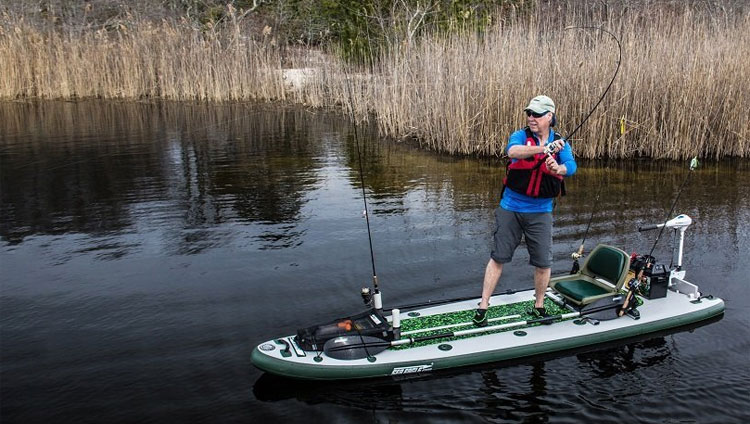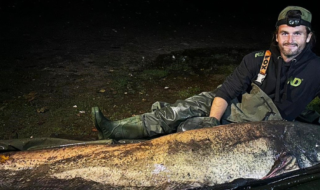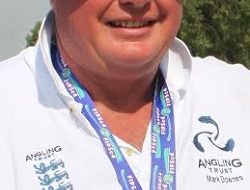When it comes to fishing, paddling out to the middle of a lake and casting your line is the best way to ensure that nothing is outside your sphere of influence.
Staying landlocked means being unable to cast the deepest recesses of the lake. There are alternatives; motor boats can get the job done, but they’re expensive, require a lot of maintenance, and taking them out is a time consuming endeavor. Kayaks are a possible solution, but loading them up means strapping them to the roof of your car. Inflatable stand up paddle (SUP) boards allow you to retain the fishing mobility of both, while being easier to store and take with you to lakes unreachable by car.
Choosing the best fishing paddle board requires technical considerations; the hull type, the fins, and even the paddle length must come together to create the perfect experience.
SUP boards can have either a displacement hull or a planing hull. Displacement hulls have a “V” shaped front, similar to what you might see on the speedboat. They allow for the board to slice through the water with ease and are easier to paddle than a planing hull, however, constantly sliding along will means turning will be more difficult. Conversely, a planing hull is wider and flatter, akin to a surfboard. By nature, planing hulls require more energy to surpass a displacement hull’s speed, but make up for it with increased maneuverability and a lighter design.
For novices or those looking for a casual day out, the type of fin you choose won’t have much of an impact on your experience. It’s once you reach greater heights that it begins to matter.
Single fin setups are traditional, and typically come with the SUP.
These grant stability and control at the cost of turning. This is because the board “tracks”, meaning it’s able to travel a straight line across the surface with less user input.
3 fin/thruster setups are the most common, for pros and novice alike
These use a larger, main fin to grant speed and stability, while a pair of smaller fins are placed closer to the board’s center to allow for greater maneuverability than a single fin would.
2+1 setups are similar to the thruster, with a caveat
The box is longer, allowing the middle fin to be moved forward or backward. For stability, place it further back, and for better steering, move it forward.
And finally, paddles. These vary based on user height and intention. For fishing, the desired length would be your own height plus eight or ten inches, for maximum reach! If you ever decide to try out surfing, you’d use your own height plus six or eight, to account for crouching.
There you have it. With all the options available, choosing the right board can seem like a hassle, but by focusing on these crucial elements of any SUP board you can narrow the selection process until the only questions left are what you want the aesthetics of your board to be and when you’ll take it out. Happy SUPing!






